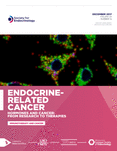Patient-derived tumour xenografts for breast cancer drug discovery
- 1Breast Cancer Functional Genomics, CRUK Cambridge Research Institute, Li Ka Shing Centre, University of Cambridge, Cambridge, UK
- 2Department of Oncology, University of Cambridge, Cambridge, UK
- Correspondence should be addressed to J W Cassidy or A Bruna; Email: john.cassidy{at}cruk.cam.ac.uk or alejandra.bruna{at}cruk.cam.ac.uk
Abstract
Despite remarkable advances in our understanding of the drivers of human malignancies, new targeted therapies often fail to show sufficient efficacy in clinical trials. Indeed, the cost of bringing a new agent to market has risen substantially in the last several decades, in part fuelled by extensive reliance on preclinical models that fail to accurately reflect tumour heterogeneity. To halt unsustainable rates of attrition in the drug discovery process, we must develop a new generation of preclinical models capable of reflecting the heterogeneity of varying degrees of complexity found in human cancers. Patient-derived tumour xenograft (PDTX) models prevail as arguably the most powerful in this regard because they capture cancer’s heterogeneous nature. Herein, we review current breast cancer models and their use in the drug discovery process, before discussing best practices for developing a highly annotated cohort of PDTX models. We describe the importance of extensive multidimensional molecular and functional characterisation of models and combination drug–drug screens to identify complex biomarkers of drug resistance and response. We reflect on our own experiences and propose the use of a cost-effective intermediate pharmacogenomic platform (the PDTX-PDTC platform) for breast cancer drug and biomarker discovery. We discuss the limitations and unanswered questions of PDTX models; yet, still strongly envision that their use in basic and translational research will dramatically change our understanding of breast cancer biology and how to more effectively treat it.
- breast cancer
- drug discovery
- biomarker discovery
- high-throughput screening
- patient-derived tumour xenografts
- targeted therapies
- pharmacogenomics
- Received 28 September 2016
- Accepted 4 October 2016
- Made available online as an Accepted Preprint 4 October 2016
- © 2016 The authors
 This work is licensed under a Creative Commons Attribution 3.0 Unported License.
This work is licensed under a Creative Commons Attribution 3.0 Unported License.












